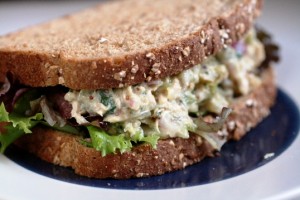Pre-Tax Health Savings Accounts Will Still Cover Weight-Loss Programs
This coming January, people with certain health problems may be able to use doctor’s orders to help with work out expenses. Weight-loss programs managed to remain on the list of medical expenses eligible for pre-tax health savings account coverage, after the IRS made revisions to the U.S. tax code. In order to qualify as a medical expense, the weight loss must be for the treatment of a specific disease (i.e., hypertension, obesity or heart disease) diagnosed by a physician.
Activities for the improvement of appearance, general health or sense of well-being are not considered a medical expense. Additionally, though consumers cannot include gym membership fees, they can include fees paid separately for a weight reduction group or program.
You can find more information on IRS Publication 502 online at IRS.gov.
It’s the holiday season, and along with the gifts and giving, also comes big meals and weight gain. But you don’t have to gain the weight! You can still eat all the yummy food and not gain the typical holiday pounds. Just follow these tips:
- Don’t skip breakfast and avoid overeating at holiday meals – Eat breakfast and do not attempt to fast going into these meals, or you will overeat for sure.
- Plan what you eat before and after holiday meals to avoid weight gain – Lighten up on your calorie intake a couple of days before and after. Your weekly average intake is more important than one day’s intake, and you can balance it out if you are careful.
- Small plate = smaller portions = reduced calorie intake – Use a small plate: This keeps your portions in check. Sure, you can still pile high but that tends to get stares from other guests.
- Don’t deprive yourself of food, just reduce the amount you eat over the holiday season – Go ahead and get a dab of everything that you want to try; this will keep you from feeling deprived later.
- Make wise food choices so you enjoy the holidays – Do, however, choose between the bread and dessert. One or the other, your choice.
 Try to keep your kitchen stocked with recipe basics:
Try to keep your kitchen stocked with recipe basics:
- Fresh and frozen fruits and vegetables.
- Recipe and soup starters such as garlic, onions, carrots, and celery.
- Healthy staples like brown rice, white Basmati rice, whole-wheat pasta, quinoa, and wild rice.
- Whole wheat bread and tortillas for healthy sandwiches and wraps.
- Beans such as lentils, black beans, chickpeas, black-eyed peas, kidney beans, fava beans, and lima beans.
- Frozen corn, peas, and other vegetables to add to recipes or for a quick vegetable side dish.
- Frozen fruit and berries to make smoothies or frozen desserts.
- Dark greens for salads, plus salad add-ins like dried fruit, nuts, beans, and seeds.
- Fresh and dried herbs and spices.
- Healthy fats and oils for cooking, such as olive oil and canola oil. You can also try specialty oils like peanut, sesame, or truffle oil for adding flavor.
- Unsalted nuts for snacking, like almonds, walnuts, cashews, peanuts, and pistachios.
- Vinegars, such as balsamic, red wine, and rice vinegar for salads and veggies.
- Strong cheeses, like aged Parmesan or blue cheese for intense flavor in salads, pasta, and soups.
 In general, healthy eating ingredients are found around the outer edges of most grocery stores—fresh fruits and vegetables, fish and poultry, whole grain breads and dairy products. The centers of many grocery stores are filled with overpriced, processed foods that aren’t good for you. Shop the perimeter of the store for most of your groceries (fresh items), add a few things from the freezer section (frozen fruits and vegetables), and the aisles with spices, oils, and whole grains (like rolled oats, brown rice, whole wheat pasta).
In general, healthy eating ingredients are found around the outer edges of most grocery stores—fresh fruits and vegetables, fish and poultry, whole grain breads and dairy products. The centers of many grocery stores are filled with overpriced, processed foods that aren’t good for you. Shop the perimeter of the store for most of your groceries (fresh items), add a few things from the freezer section (frozen fruits and vegetables), and the aisles with spices, oils, and whole grains (like rolled oats, brown rice, whole wheat pasta).
 Calcium and vitamin D are essential for strong, healthy bones—vitamin D is essential for optimum calcium absorption in the small intestine. Recommended calcium levels are 1000 mg per day, 1200 mg if you are over 50 years old. Take a vitamin D and calcium supplement if you don’t get enough of these nutrients from your diet.
Calcium and vitamin D are essential for strong, healthy bones—vitamin D is essential for optimum calcium absorption in the small intestine. Recommended calcium levels are 1000 mg per day, 1200 mg if you are over 50 years old. Take a vitamin D and calcium supplement if you don’t get enough of these nutrients from your diet.
Great sources of calcium include:
- Dairy products, which come already fortified with vitamin D.
- Dark green, leafy vegetables, such as kale and collard greens
- Dried beans and legumes
 Protein gives us the energy to get up and go—and keep going. Protein in food is broken down into the 20 amino acids that are the body’s basic building blocks for growth and energy, and essential for maintaining cells, tissues and organs. A lack of protein in our diet can slow growth, reduce muscle mass, lower immunity, and weaken the heart and respiratory system. Protein is particularly important for children, whose bodies are growing and changing daily.
Protein gives us the energy to get up and go—and keep going. Protein in food is broken down into the 20 amino acids that are the body’s basic building blocks for growth and energy, and essential for maintaining cells, tissues and organs. A lack of protein in our diet can slow growth, reduce muscle mass, lower immunity, and weaken the heart and respiratory system. Protein is particularly important for children, whose bodies are growing and changing daily.
Here are some guidelines for including protein in your healthy diet:
Try different types of protein. Whether or not you are a vegetarian, trying different protein sources—such as beans, nuts, seeds, peas, tofu and soy products—will open up new options for healthy mealtimes.
- Beans: Black beans, navy beans, garbanzos, and lentils are good options.
- Nuts: Almonds, walnuts, pistachios and pecans are great choices.
- Soy products: Try tofu, soy milk, tempeh and veggie burgers for a change.
- Avoid salted or sugary nuts and refried beans.
Downsize your portions of protein. Most people in the U.S. eat too much protein. Try to move away from protein being the center of your meal. Focus on equal servings of protein, whole grains, and vegetables.
Focus on quality sources of protein, like fresh fish, chicken or turkey, tofu, eggs, beans or nuts. When you are having meat, chicken, or turkey, buy meat that is free of hormones and antibiotics.
Complete, incomplete and complementary proteins
- A complete protein source—from animal proteins such as meat, poultry, fish, milk, cheese and eggs—provides all of the essential amino acids.
- An incomplete protein—from vegetable proteins like grains, legumes, nuts, seeds and beans—is low in one or more essential amino acids.
- Complementary proteins are two or more incomplete protein sources that together provide all of the essential amino acids your body needs. For example, rice and dry beans are each incomplete proteins, but together they provide all of the essential amino acids.
- Do complementary proteins need to be eaten in the same meal? Research shows that your body can combine complementary proteins that are eaten within the same day.
- Why are complete and complementary proteins important? Complete and complementary proteins that provide all of the essential amino acids will fill you up longer than carbohydrates because they break down more slowly in the digestive process.
 Choose healthy carbohydrates and fiber sources, especially whole grains, for long lasting energy. In addition to being delicious and satisfying, whole grains are rich in phytochemicals and antioxidants, which help to protect against coronary heart disease, certain cancers, and diabetes. Studies have shown people who eat more whole grains tend to have a healthier heart.
Choose healthy carbohydrates and fiber sources, especially whole grains, for long lasting energy. In addition to being delicious and satisfying, whole grains are rich in phytochemicals and antioxidants, which help to protect against coronary heart disease, certain cancers, and diabetes. Studies have shown people who eat more whole grains tend to have a healthier heart.
A quick definition of healthy carbs and unhealthy carbs
Healthy carbs (sometimes known as good carbs) include whole grains, beans, fruits, and vegetables. Healthy carbs are digested slowly, helping you feel full longer and keeping blood sugar and insulin levels stable.
Unhealthy carbs (or bad carbs) are foods such as white flour, refined sugar and white rice that have been stripped of all bran, fiber and nutrients. Unhealthy carbs digest quickly and cause spikes in blood sugar levels and energy.
- Include a variety of whole grains in your healthy diet, including whole wheat, brown rice, millet, quinoa, and barley. Experiment with different grains to find your favorites.
- Make sure you’re really getting whole grains. Be aware that the words stone-ground, multi-grain, 100% wheat, or bran, don’t necessarily mean that a product is whole grain. Look for the new Whole Grain Stamp. If there is no stamp look for the words “whole grain” or “100% whole wheat,” and check the ingredients.
- Try mixing grains as a first step to switching to whole grains. If whole grains, like brown rice and whole wheat pasta, don’t sound good at first, start by mixing what you normally use with the whole grains. You can gradually increase the whole grain to 100%.
Avoid: Refined grains such as breads, pastas, and breakfast cereals that are not whole grain.
 To set yourself up for success, think about planning a healthy diet as a number of small, manageable steps rather than one big drastic change. If you approach the changes gradually and with commitment, you will have a healthy diet sooner than you think.
To set yourself up for success, think about planning a healthy diet as a number of small, manageable steps rather than one big drastic change. If you approach the changes gradually and with commitment, you will have a healthy diet sooner than you think.
- Simplify. Instead of being overly concerned with counting calories or measuring portion sizes, think of your diet in terms of color, variety and freshness—then it should be easier to make healthy choices. Focus on finding foods you love and easy recipes that incorporate a few fresh ingredients. Gradually, your diet will become healthier and more delicious.
- Start slow and make changes to your eating habits over time. Trying to make your diet healthy overnight isn’t realistic or smart. Changing everything at once usually leads to cheating or giving up on your new eating plan. Make small steps, like adding a salad (full of different color vegetables) to your diet once a day or switching from butter to olive oil when cooking. As your small changes become habit, you can continue to add more healthy choices to your diet.
- Every change you make to improve your diet matters. You don’t have to be perfect and you don’t have to completely eliminate foods you enjoy to have a healthy diet. The long term goal is to feel good, have more energy and reduce the risk of cancer and disease. Don’t let your missteps derail you—every healthy food choice you make counts.
Think of exercise as a food group in your diet.
Find something active that you like to do and add it to your day, just like you would add healthy greens, blueberries or salmon. The benefits of lifelong exercise are abundant and regular exercise may even motivate you to make healthy food choices a habit.
 Fruits and vegetables are the foundation of a healthy diet—they are low in calories and nutrient dense, which means they are packed with vitamins, minerals, antioxidants and fiber. Fruits and vegetables should be part of every meal and your first choice for a snack—aim for a minimum of five portions each day. The antioxidants and other nutrients in fruits and vegetables help protect against certain types of cancer and other diseases.
Fruits and vegetables are the foundation of a healthy diet—they are low in calories and nutrient dense, which means they are packed with vitamins, minerals, antioxidants and fiber. Fruits and vegetables should be part of every meal and your first choice for a snack—aim for a minimum of five portions each day. The antioxidants and other nutrients in fruits and vegetables help protect against certain types of cancer and other diseases.
Eat a rainbow of fruits and vegetables every day—the brighter the better.
The brighter, deeper colored fruits and vegetables contain higher concentrations of vitamins, minerals and antioxidants—and different colors provide different benefits. Some great choices are:
- Greens: Greens are packed with calcium, magnesium, iron, potassium, zinc, vitamins A, C, E and K, and they help strengthen the blood and respiratory systems. Be adventurous with your greens and branch out beyond bright and dark green lettuce—kale, mustard greens, broccoli, Chinese cabbage are just a few of the options.
- Sweet vegetables: Naturally sweet vegetables add healthy sweetness to your meals and reduce your cravings for other sweets. Some examples of sweet vegetables are corn, carrots, beets, sweet potatoes or yams, winter squash, and onions.
- Fruit: A wide variety of fruit is also vital to a healthy diet. Fruit provides fiber, vitamins and antioxidants. Berries are cancer-fighting, apples provide fiber, oranges and mangos offer vitamin C, and so on.
Avoid: Fruit juices, which can contain up to 10 teaspoons of sugar per cup; avoid or dilute with water. Canned fruit is often in sugary syrup, and dried fruit, while an excellent source of fiber, can be high in calories. Avoid fried veggies and those with dressings or sauces—too much unhealthy fat and calories.



